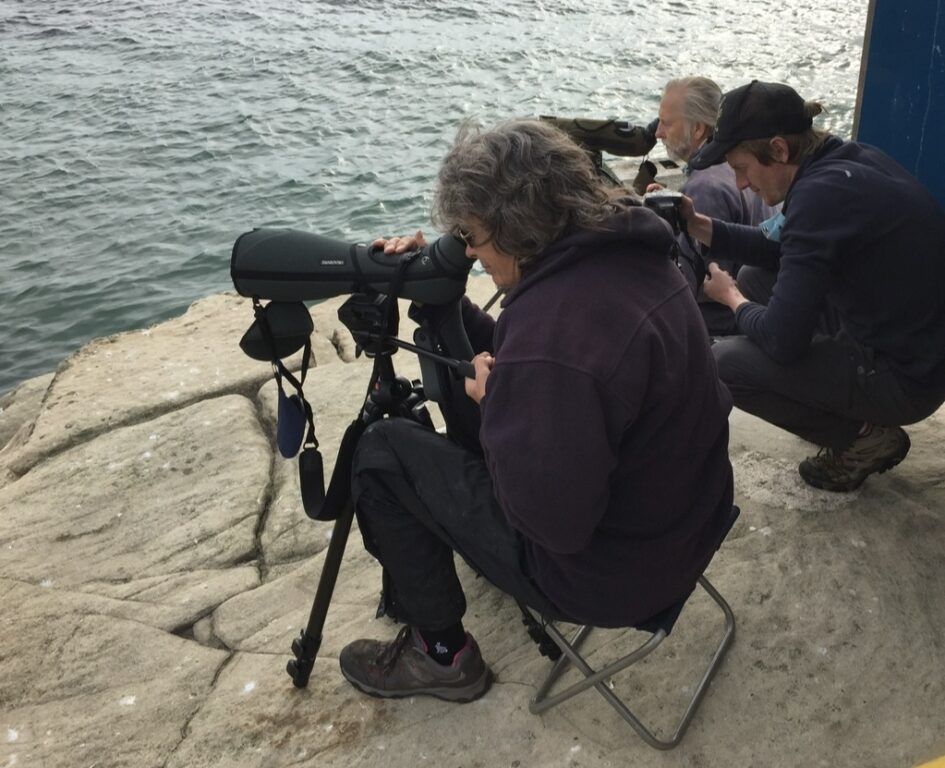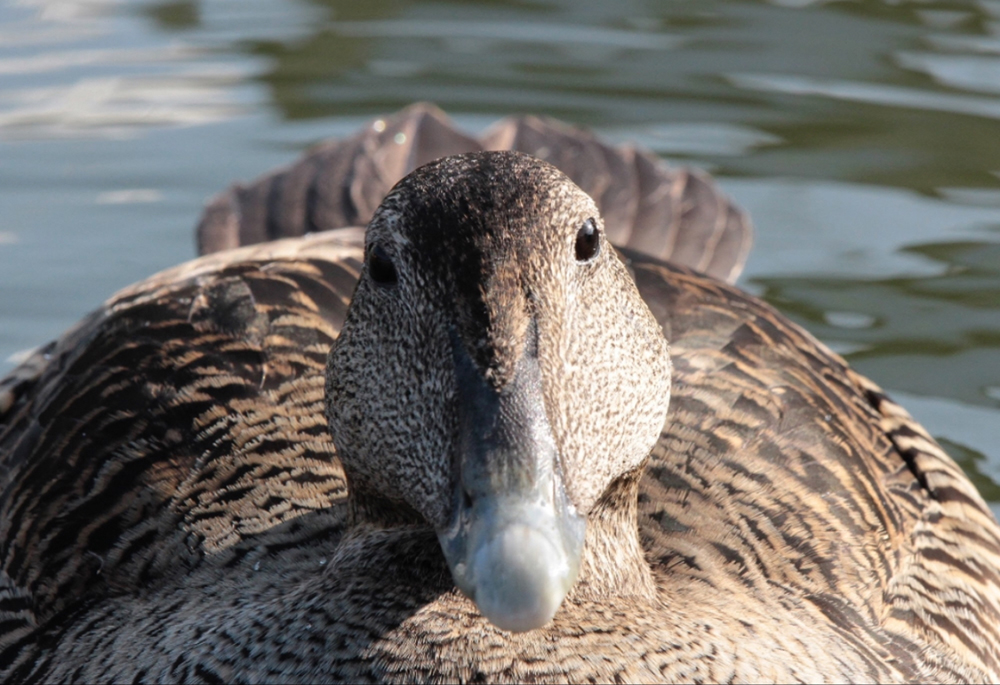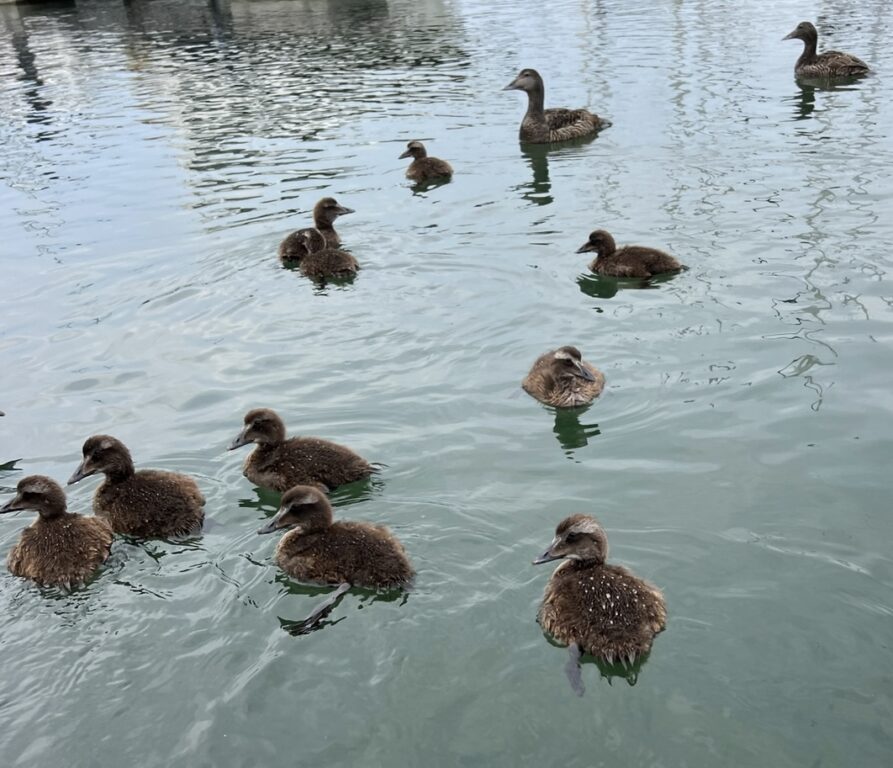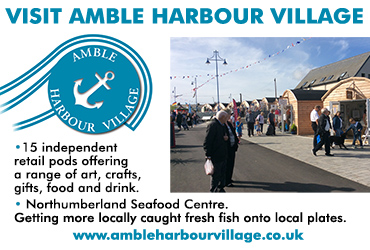Eider duck research paper published
A much-anticipated long-term research study spanning 27 years has recently been published which features the Eider ducks of the Coquet Estuary and harbour.

Hilary Brooker-Carey and Chris Redfern (wearing cap). Photo: Dr Paul Morrison
Coquet Island is a nesting site for Common Eiders at the southern limit of their range on the east coast. This site is designated as a Site of Special Scientific Interest (SSSI) and is home to the sole UK colony of Roseate Terns, Britain’s rarest nesting seabird, and an internationally important breeding site for some 80,000 nesting seabirds. Despite this, the island is considered by Natural England to be in an ‘Unfavourable Condition’ because of the decline in numbers of nesting female eiders over the last two decades.
The Coquet Estuary is a “reception nursery area”, vital to the survival of Eider ducklings that leave the island between May and July each year.
Local ornithologist Hilary Brooker-Carey monitored the numbers of ducklings arriving within Coquet Estuary daily during the breeding season from 1995 to 2021 inclusive.

Female Eider. Photo: Dr Paul Morrison
Hilary said “It all began 27 years ago when the local authority wanted to know which areas of the estuary were important to wildlife, in particular the Eider duck as it was considered a good indicator species.”
Hilary added “it became clear quite early in the study that the Eider ducks on the Northumberland coast were in trouble, with numbers steadily falling year on year, and the study was helping to shed light on Eider duck behaviour and their needs for survival.
“I am delighted that this research has now been published so that it can be shared with other researchers as I believe it is our joint responsibility to help support our special seabird communities along the north east coast.”
Dr Paul Morrison who was employed as Northumberland Coast Officer at the time, said: “This is a vital piece of research which helps us to understand the reasons behind the decline of our Cuddy ducks.
“Hilary has quietly undertaken this remarkable work for so many years. It is pleasing to have a genuine researcher in our Amble community offering a scientific insight into one of our iconic coastal birds.”

Eider ducks in the Coquet Estuary. Photo: Dr Paul Morrison
Hilary recruited Prof Chris Redfern from Newcastle University to carry out an analysis. He said “Hilary has collected an incredible amount of data over a 27-year period and this gives us a unique and very detailed picture of the arrival and loss of Eider ducklings from the Coquet Estuary. Her data shows that by monitoring ducklings in the Estuary we can estimate the breeding success of Eiders on Coquet Island and how this is affected by environmental changes.
“Her data provides a platform for promoting Eider conservation locally which will enable human and wildlife activities to exist together within the Coquet Estuary.”
The paper is published in Bird Study: https://www.tandfonline.com/doi/full/10.1080/00063657.2023.2286297











